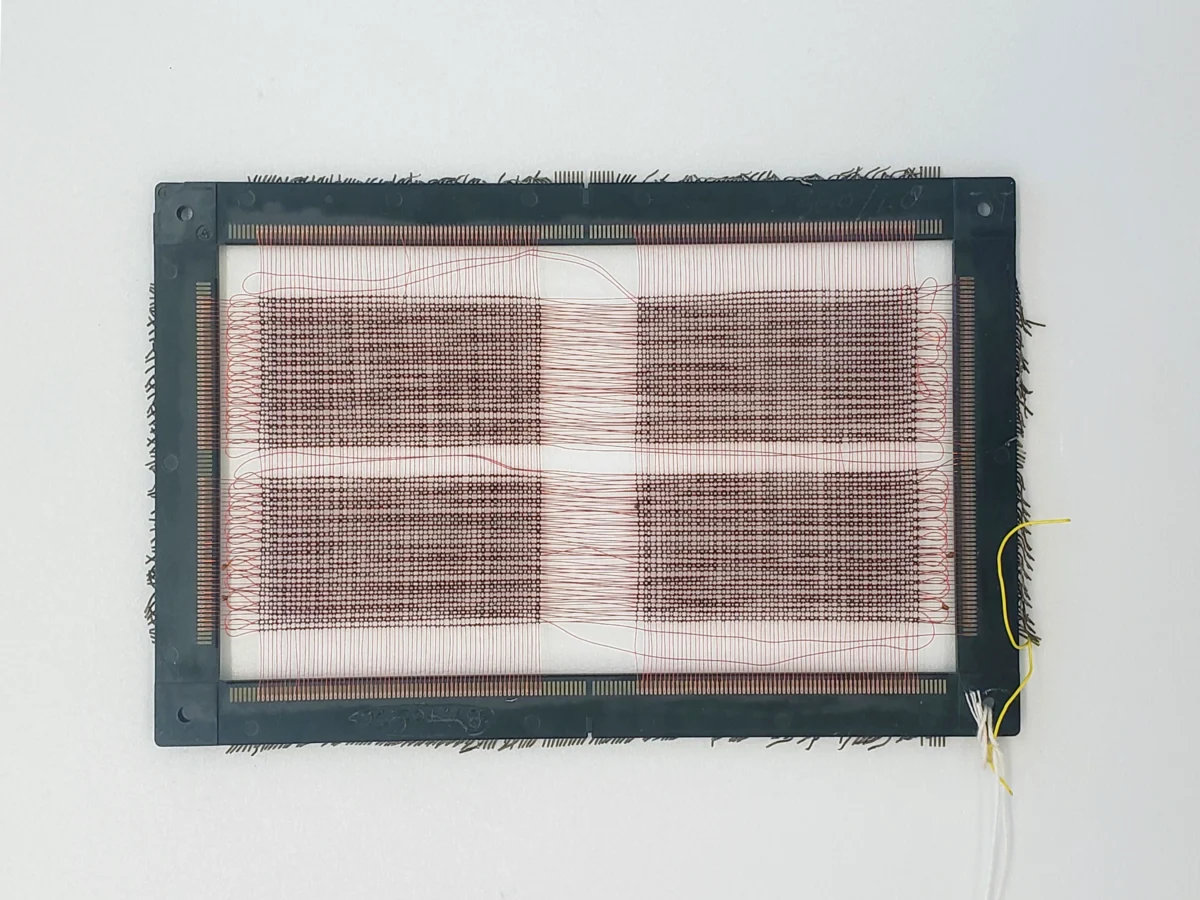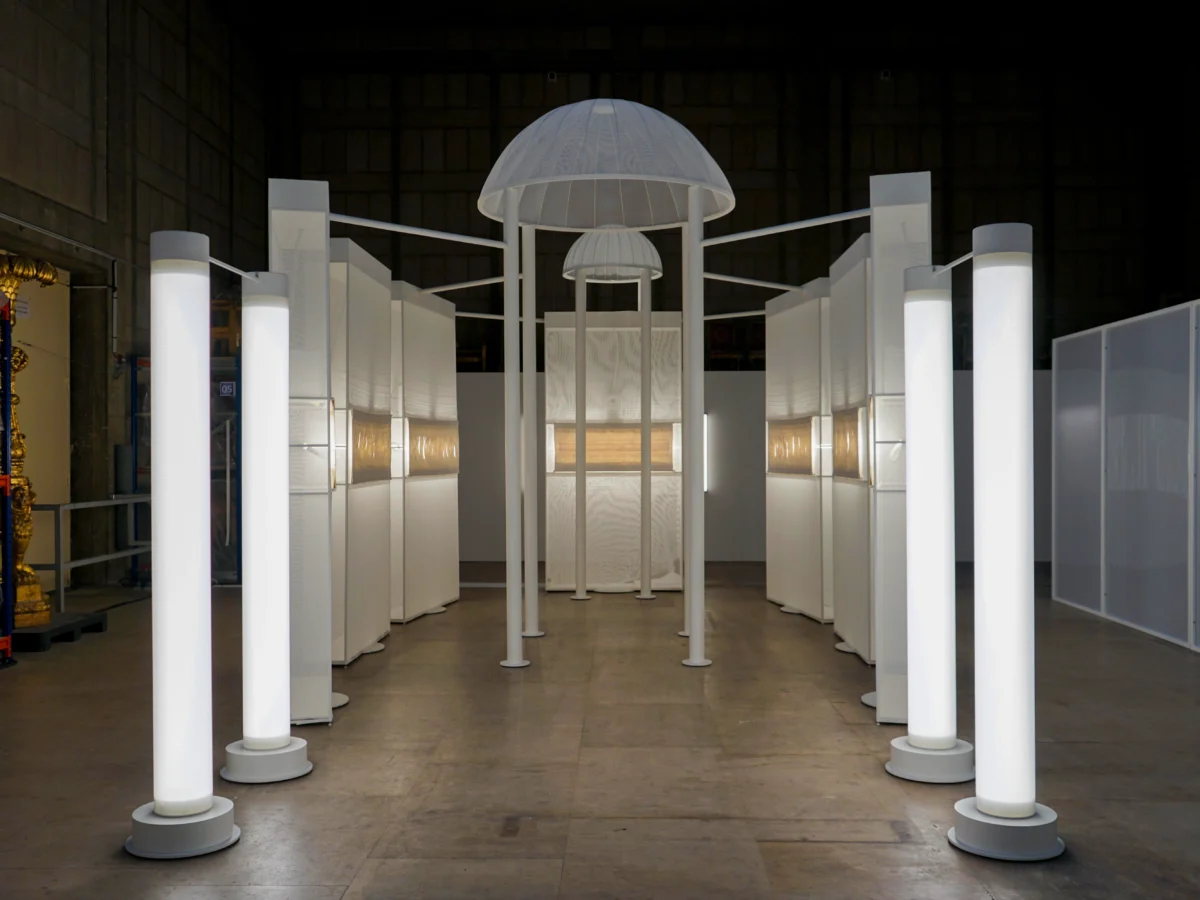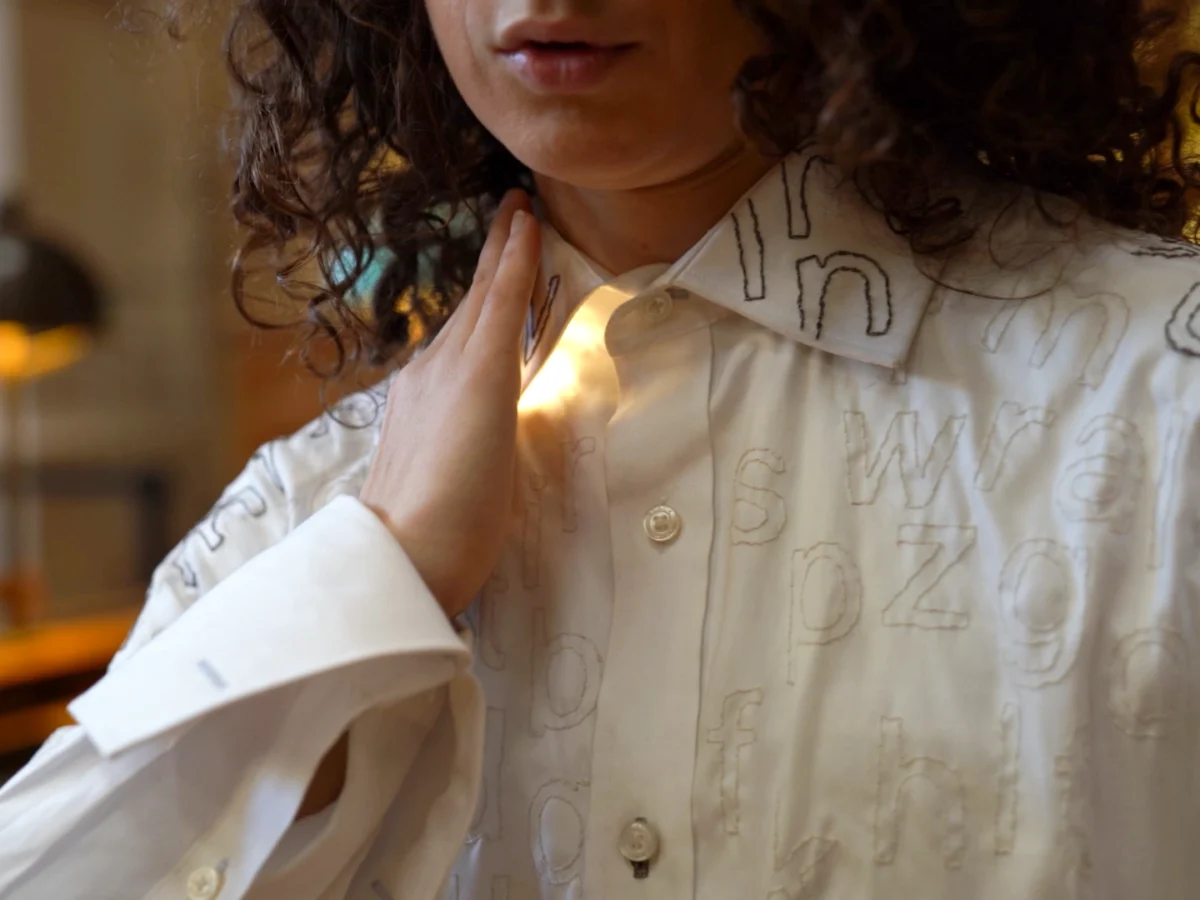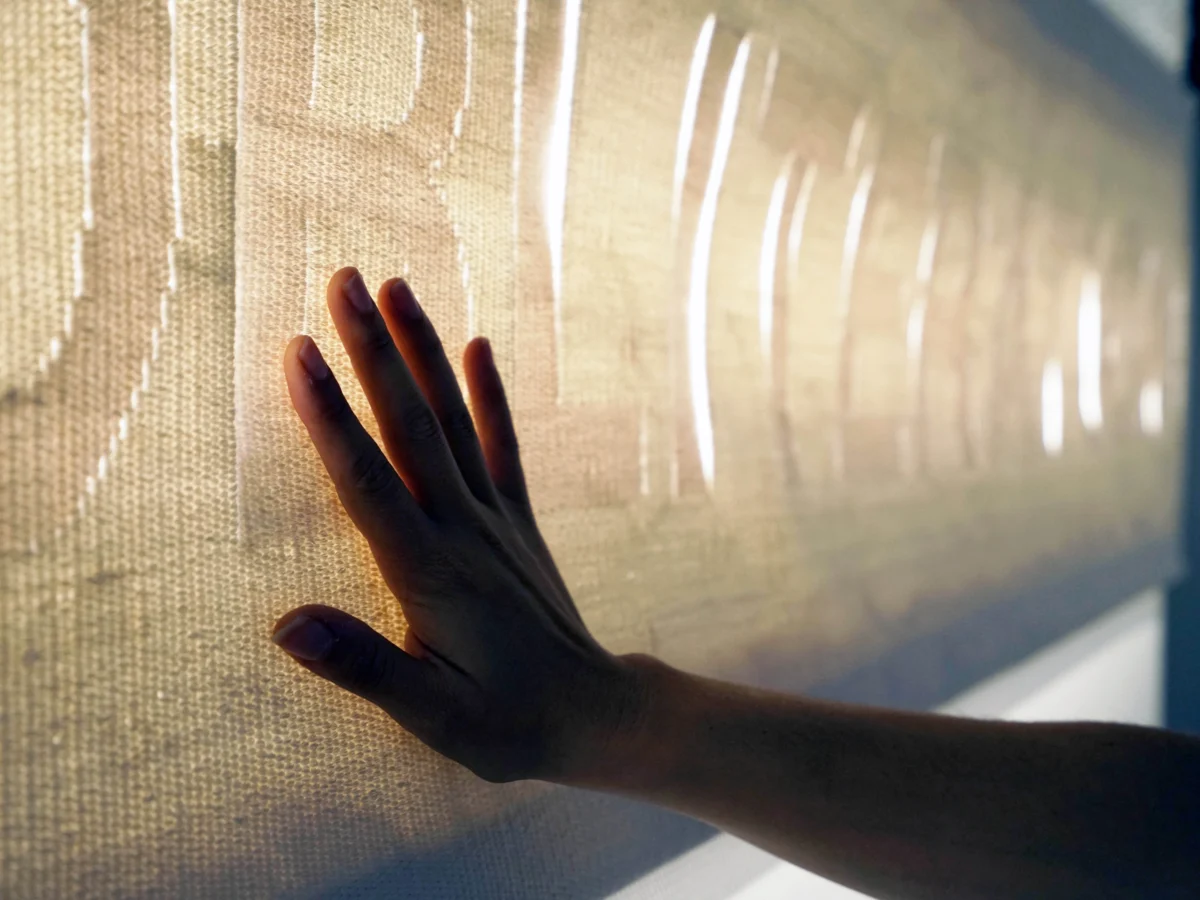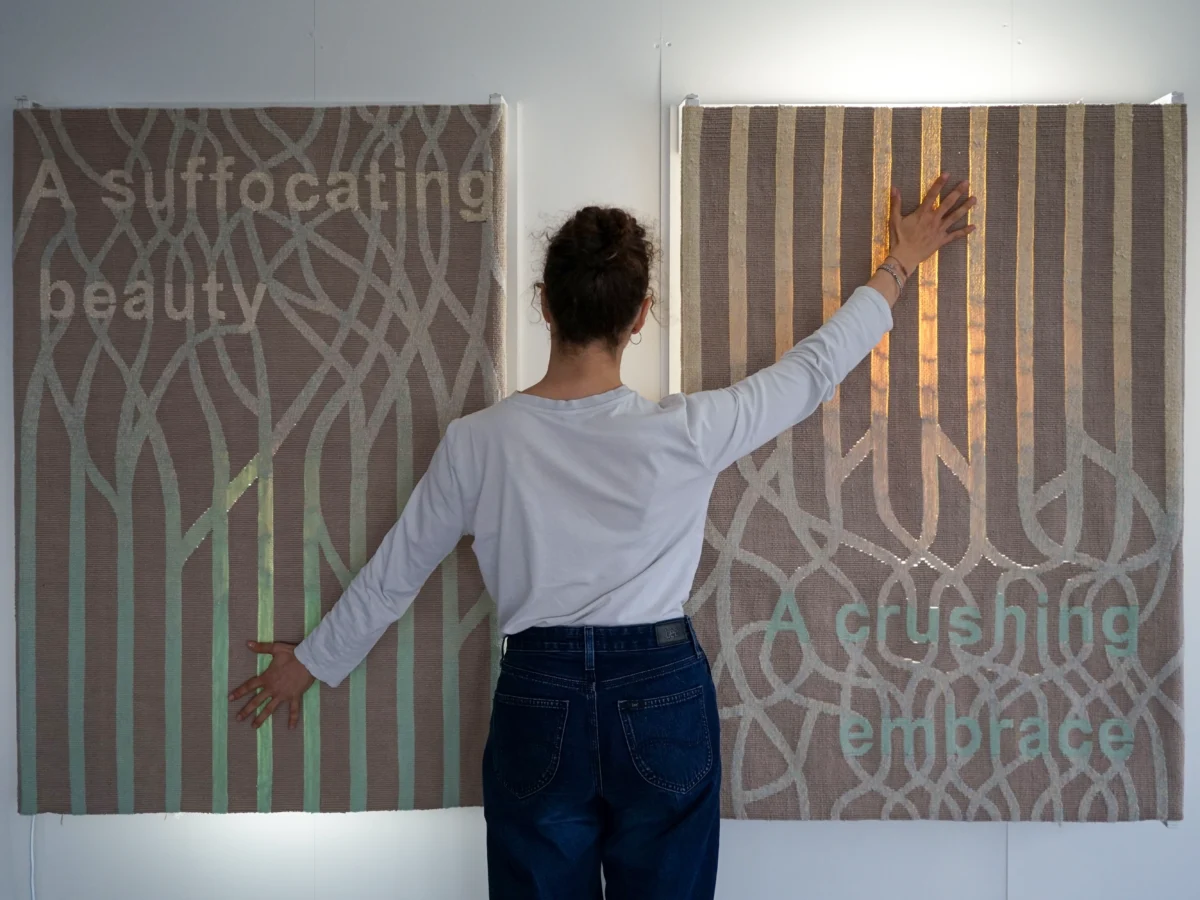For the MIT visiting artist Chloé Bensahel, fabric itself tells the story
In 2021, a curator at the Smithsonian contacted Chloé Bensahel, currently the MIT 2023-24 Ida Ely Rubin Artist in Residence, and told her about some objects that had been made for space missions. “They were weavings of conductive yarn with magnetic pieces in them,” Bensahel said. “After World War II, you had these really powerful computers but no way to store data, so scientists at MIT and Harvard came up with this magnetic core memory. It was the last moment, I think, in computing history when information was visible: you can actually see the code because of the little magnets that were turned on or turned off.”
What really captured the attention of Bensahel, who works with textiles, is that those items had been woven by hand at MIT. “They’re the result of two histories in New England that are coinciding: the declining textile industry and the increasing space research,” she said. “Legend has it that the women who were getting laid off from the textile industries got hired by MIT to make these objects. They were weaving here on campus.”
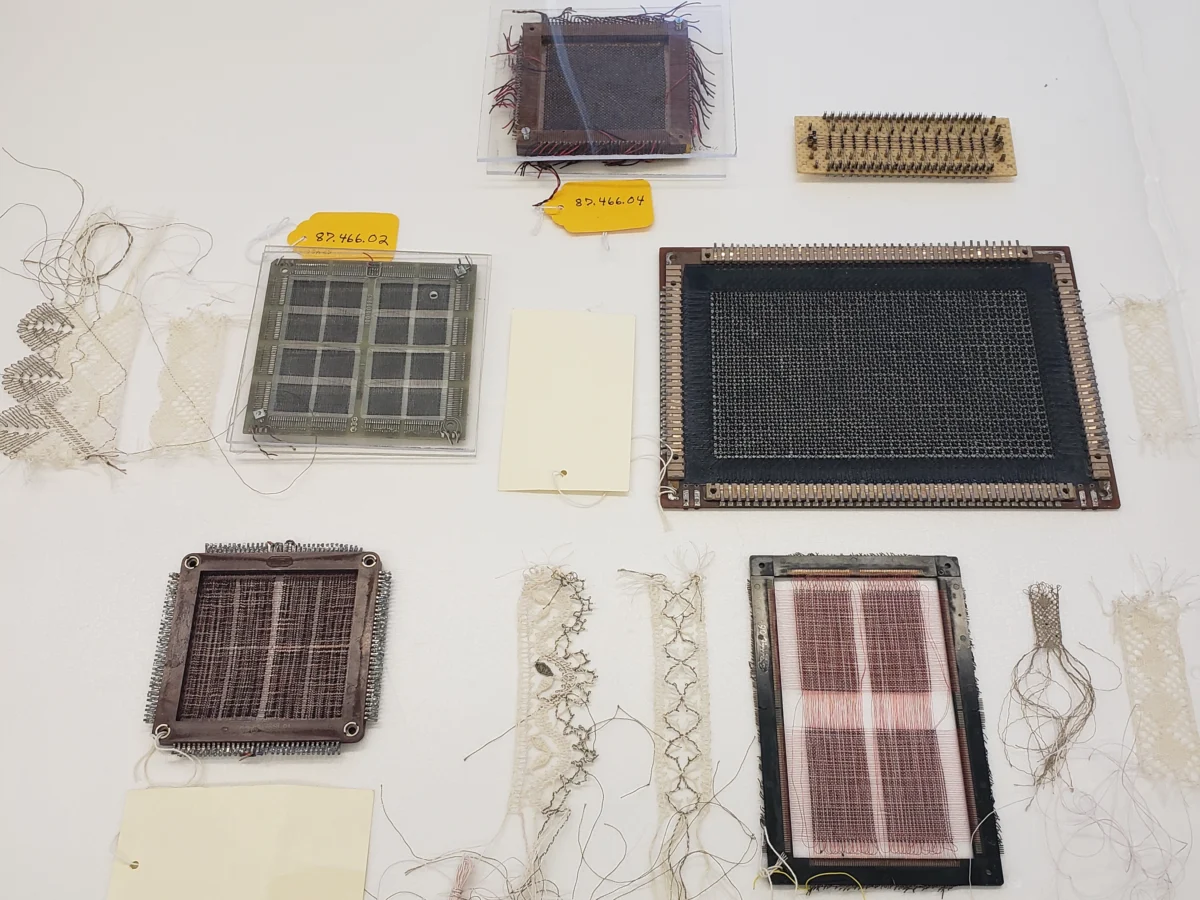
Reinventing codes
Eventually, Bensahel connected with Zach Lieberman, an adjunct associate professor who runs the Future Sketches group at the MIT Media Lab, who applied for a MIT Center for Art Science & Technology (CAST) grant to bring her to campus as a visiting artist. The pair share an interest in various forms of code and communication — Bensahel, for example, sees textiles as carrying information, not just in what they visually display, like, say, a slogan on a T-shirt, but in the very way they are made. Now, they are working together at MIT, which has been unfurling in connection with Bensahel’s residency at Villa Albertine, an arts institution launched in 2021 by the French Embassy in the United States that supports cultural exchange between the United States, France and beyond, including offering more than 50 residencies each year for artists, thinkers, and creators across all disciplines.
Bensahel is building on MIT’s groundbreaking legacy in the weaving of memory technology, which complements the research conducted by her MIT collaborators, whether they are faculty members or research assistants. “We’re primarily software-oriented here,” Lieberman said, referring to his group. “We are working in the realm of bits and with language. Chloe’s work is also really intimately concerned with language, but she’s coming at it from a perspective of materials and trying to figure out how to weave them in different ways, and connect with electronics and sensing.”
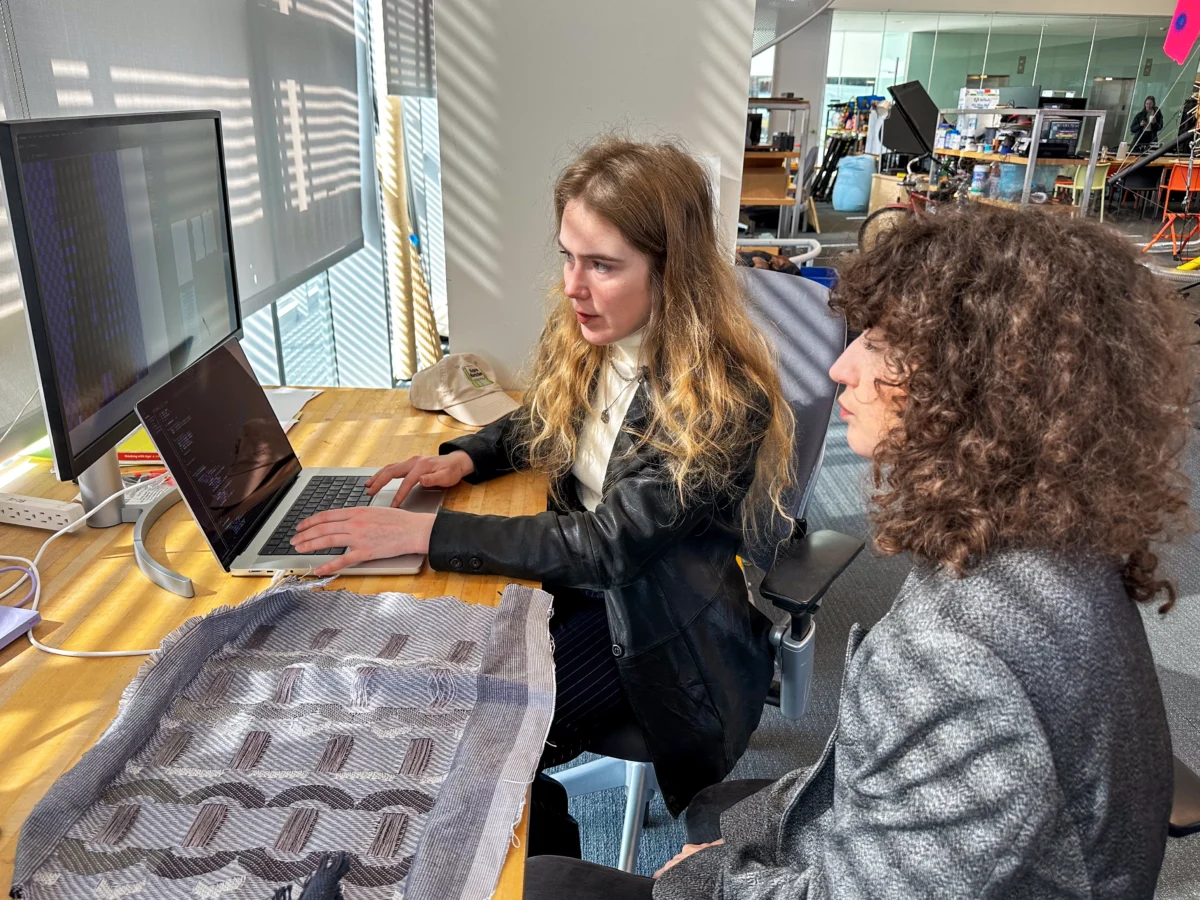
Theory and craftsmanship
Born in France, Bensahel moved to the United States when she was seven. She attended Parsons School of Design, in New York City. She specialized in integrated design with a focus on textiles, and graduated in 2013. The coursework was essentially theoretical and philosophical, though, and afterward Bensahel moved to France to hone her craftsmanship. “I wanted to learn with my hands, not just my mind,” she said — no doubt making her a perfect fit for MIT, whose motto, “mens et manus,” translates as “mind and hand.”
This interest in the interaction of the physical with the ineffable continues to guide her art, which essentially renders communication tactile. “Chloe’s work is so much about listening to materials and finding ways to hear how they talk, hear the sounds that they make,” Lieberman said. This approach will be in evidence at a forthcoming exhibition “Tisser L’Hybride: Chloe Bensahel” at the Palais de Tokyo in Paris, which will feature three interactive tapestries. According to Bensahel, the artwork in the exhibit and what she is doing at MIT are “not going to be directly connected,” but she also points out that “they benefit from one another, for sure.”
Indeed, keeping an open mind to different fields and different ways of thinking has been enriching Bensahel’s time on campus. In addition to such public-facing activities as a presentation and demonstration at the MIT Museum’s After Dark series, in March, she has been actively collaborating with various entities, faculty and students. For instance, she has been leveraging prototyping equipment and exploring potential industrial applications of her work with the public-private partnership Advanced Functional Fabrics of America, of which MIT is a member. “I love that something that could be in a museum could also be in a hospital,” Bensahel said. (AFFOA staff members Jesse Jur, Director of Technical Program Development, and Frannie Logan, Textile Technologist, have been providing technical support as well.)
Thriving on collaboration
Interlocutors on campus include Azra Akšamija, the Director of the MIT Future Heritage Lab, and Vera van de Seyp, a research assistant in the Future Sketches group, whose interests and experiences complement Bensahel. “A lot of my work is text-based and I’m not a typography or graphic designer at all, so it’s really nice to work with Vera, because what we’re essentially doing is thinking about form and function at the same time,” Bensahel said. “I’m working on how I can make a textile that can be magnetized, in the way that magnetic core memory was magnetic. I would like for it to tense up or move in different ways, so that essentially you have a textile that can assemble in different ways.”
Most of all, perhaps, it’s the constant intellectual activity at MIT that has spurred and inspired Bensahel, who relishes the opportunity to integrate perspectives that are new to her. “I’ve had a lot of really eye-opening conversations on what magnetism means,” she says. “I just had lunch with a researcher and she was like, ‘Bacteria sometimes have magnetic fields to know how to grow.’ This place, it’s really about the people,” Bensahel continued. “It’s a very dense group of brilliant people so no matter who you’re running into, they’re going to have this very powerful depth of knowledge in one specific field. Being here also shifted my perspective: I didn’t really consider myself a researcher, or a scientist for that matter, and I feel more comfortable in that space now. Every day, I find new applications or new directions.”
Written by Elisabeth Vincentelli
Editorial direction by Leah Talatinian


